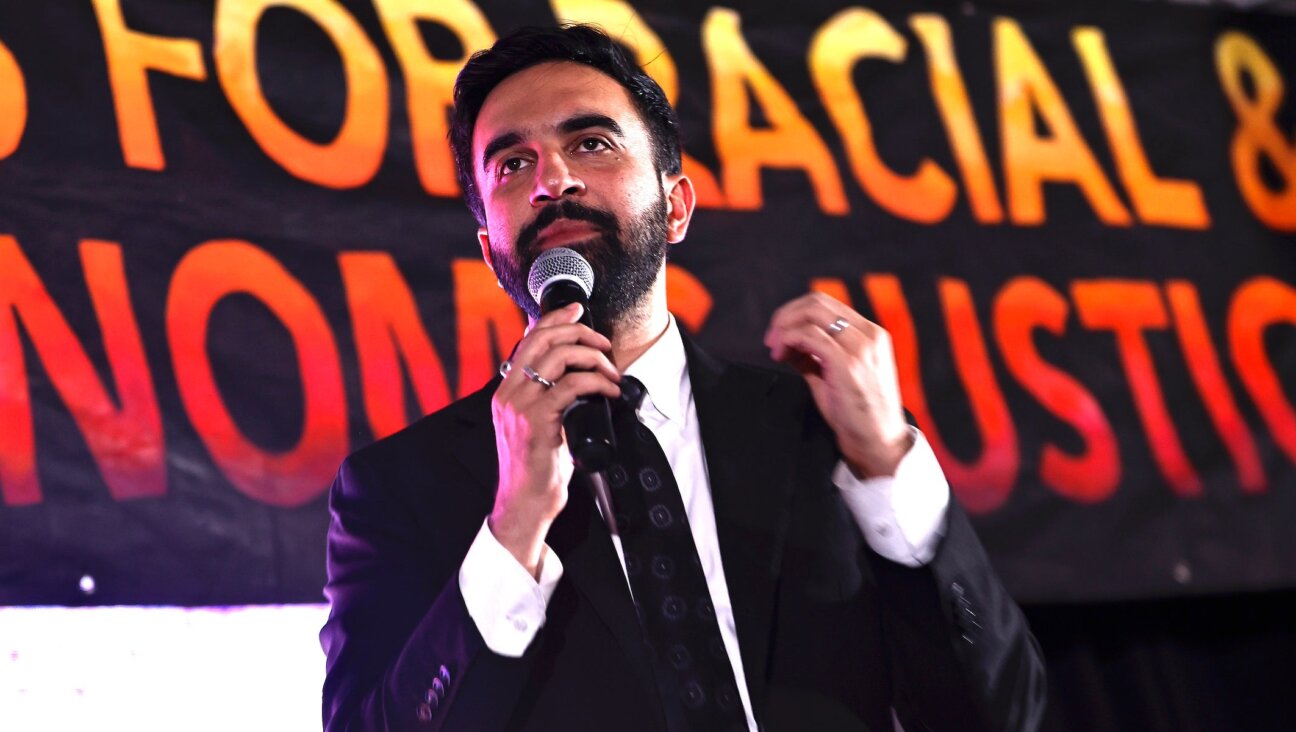Christians Killed the Passion The First Time It Came to the U.S. Stage
Mel Gibson’s film is certainly not the first dramatic adaptation of the Passion to provoke a public furor in America.
A hundred and twenty-five years ago, the first American stage version of the Passion ignited one of the most explosive controversies in this country’s theatrical history — with a Jew at the epicenter of the maelstrom. The issues that were hotly debated then are similar to those we are grappling with at the moment: censorship and communal sensitivities, the personal identity of the artist as a marker of sincerity, the boundaries between entertainment and sacred material, commercialism and antisemitism.
“The Passion” opened on March 4, 1879, at San Francisco’s Grand Opera House, the city’s largest. It was staged by the young David Belasco, a Sephardic Jew who some years later would become a legendary figure on Broadway, famous as the master of elaborate scenic displays. “The Passion” was visually spectacular by all accounts. Starring matinee idol James O’Neill (father of playwright Eugene) in the role of Christ, it had an enormous cast with hundreds of extras, including a hundred mothers with their babies in the scene of the Massacre of the Innocents. It boasted a choir of 80, a herd of live sheep and lavish biblical sets and costumes.
Audiences were thrilled. When the charismatic O’Neill appeared onstage as Jesus, with a halo atop his head, many of the women in the audience, overwhelmed by religious fervor, knelt and prayed. Some spectators fainted when he was dragged before Pontius Pilate.
Emotions in the auditorium became so intense that during the crucifixion scene, some young rowdies bolted out to the street where they assaulted Jewish-looking persons and attacked Jewish stores.
The clergy, especially of Protestant denominations, fought the production tooth and nail, regarding the theatrical embodiment of Jesus sufferings as obscene and sacrilegious. The fact that it was not grounded in a devotional performance like the much-admired Oberammergau Passion, but was produced in a commercial theater, was deemed scandalous. Chagrined by the ruckus, the San Francisco authorities passed a municipal statute (No. 1493) that prohibited the exhibition or performance of the life and death of Jesus in any venue where money was charged; such performances, it was said, intended “to debase or degrade religion.”
Accordingly, “The Passion” closed on March 13 after only eight performances, but was reopened a month later by its desperate producers, Tom Maguire and E.J. “Lucky” Baldwin, in time for Easter. That evening, as soon as Jesus was removed from the cross, two police officers entered the theater and arrested eight people connected with the production, including O’Neill, who was taken out in his halo and biblical costume. The actor, who had deeply identified with his stage role, was outraged, but finally pleaded guilty to charges of misdemeanor and paid the then-considerable fine of $50. It took nearly 60 years before San Francisco finally repealed statute No. 1493, in 1938.
The Jewish identity of the play’s author, although his input was nominal, added fuel to the fire. It was written by Salmi Morse, a writer-entrepreneur whose extraordinary biography seems to fuse fact and fiction. Born in London in 1824 as either Samuel or Solomon Moses to Russian-Jewish parents, he was said to have amassed a fortune in the Australian gold rush of the 1850s. When he settled in San Francisco in the mid-1870s, he presented himself as a war hero, recounting adventures in the Crimean War, and claimed to have been decorated by the Sultan of Turkey, and to have had a holiday named after him in Santo Domingo. He maintained that he had toured the Middle East and had made an on-foot pilgrimage to Jerusalem, where he went through an intense religious experience.
Morse was determined to bring his play to the public and made plans to open it in New York City after its San Francisco run. Again he encountered tremendous opposition from the religious, civic and media establishment. The New York Times proclaimed that “there is no decent man calling himself a Christian who is not shocked at the proposal to produce the Passion Play in this City as a money-making speculation.” Rabbi Frederic de Sola Mendes of Congregation Shaarey Tefillah spoke against the venture, calling upon Jews to respect their neighbors’ religion.
By the end of November 1880, a week before the scheduled opening of “The Passion” at the Booth Theater on Broadway, the house’s manager announced his decision to abandon the project in response to the communal distress, adding, rather sanctimoniously, that he had not taken up the project to make money and that he had intended all along to contribute the profits to the “poor of New York.”
Morse did not give up, digging into his own pockets to rent the Sixth Avenue Armory to serve as his theater. All he needed was a theater license, which the mayor, yielding to political pressure, refused to grant. Legal wrangling followed, with Morse trying to pass off performances as private dress rehearsals. Unsurprisingly, the production became the hottest ticket in town. Swiftly, the city authorities moved to axe “The Passion.”
Morse became embroiled in legal hearings and injunctions that led to his arrest. His stubbornness and defiance notwithstanding, it became clear he did not stand a chance against the system. The Passion play was doomed, and later attempts to produce it in Cincinnati and Louisville, Ky., were aborted.
Morse’s Jewishness was evoked unabashedly by his opponents, who used antisemitic stereotypes of the greedy and alien Jew by caricaturing him in the press as a deceitful “Hebraic” Chatham Street clothes-dealer. It was argued that his Jewishness prevented him from comprehending the sentiments of Christians, and that he was insincere in his spiritual pretense, for had he truly believed in Jesus he would have converted. When Morse asked why the production of Nativity plays was allowed, he was told that the fact that such plays were organized by the church made all the difference, since they were intended to arouse feelings of piety and devotion, while a commercial performance invited contempt from a mixed and irreverent audience.
While Morse’s venture failed, it succeeded in engaging America for the first time in a serious debate concerning the trajectory of religion and entertainment in the public sphere, a topic that has recently recaptured the country’s attention.
As for Salmi Morse, his story ended on February 22, 1884, when his body was found floating in the East River. Though there were hushed suggestions of possible foul play, the death was determined to be the result of either suicide or accident.
Edna Nahshon is a professor at the Jewish Theological Seminary of America. She is the author of the forthcoming “From the Ghetto to the Melting Pot: Israel Zangwill’s Jewish Plays” (Wayne State University) and of “Yiddish Proletarian Theatre: The Art and Politics of the Artef, 1925-1940.”














